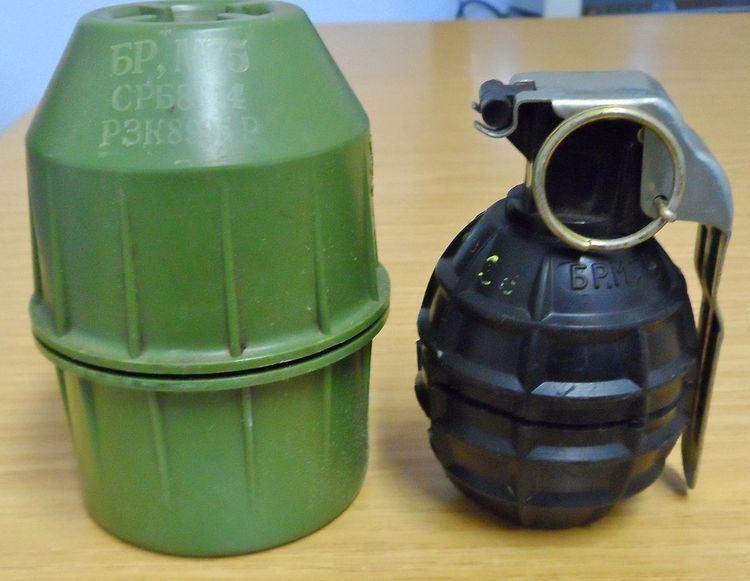Type Hand grenade Wars Balkan war Weight 335g | Place of origin Yugoslavia Variants M93 (Macedonia) Length 89mm | |
 | ||
The M75 grenade (English: Kashikara, Serbian Latin: Kašikara, Serbian Cyrillic: Кашикара) is a Yugoslav hand grenade, efficient in trenches, forests and bunkers. The grenade consists of a body, an explosive charge and "mouse trap" style fuse mechanism, all contained in a plastic transportation can.
The core contains 3,000 steel balls with a diameter of 2.5–3 mm with an effective killing radius is 12–18 m, and a casualty radius of 30–54 m. The explosive charge is 36–38 grams of plastic explosive. The fuse, named "Bušon" in Serbian, has a delay time of 3 to 4.4 seconds. Its name comes from the Turkish word for a spoon, "Kašika". In American English, the lever of the grenade is colloquially known as the "Spoon". The M-75 hand grenade was also produced in Macedonia, where it is designated M-93.
Leftover grenades of this type (and the M-93) from the Yugoslav Wars have been used in bomb attacks by organised criminals in Malmö, a city which has a large immigrant population from the former Yugoslavia. Others were used in a gun and grenade attack against two British police officers in 2012
